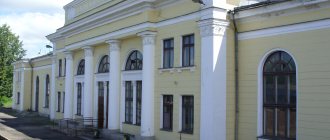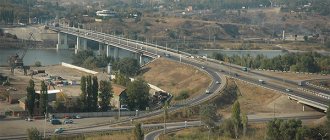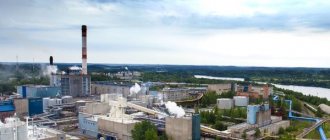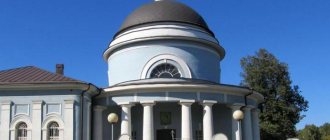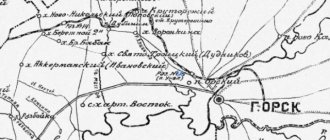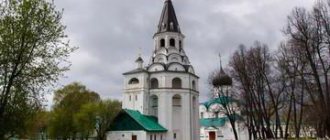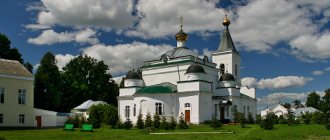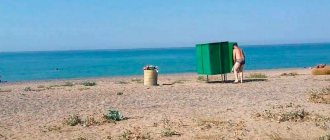The first time the city of Porkhov, Pskov region, was mentioned in written chronicles was in 1239. Prince Alexander ordered the construction of guard fortifications at this place to protect the waterway to Novgorod. And a fortress built of stone still stands in the city, although Porkhov itself was badly damaged during the hostilities. The ancient architecture could not be restored.
History of creation
The city and medieval fortress of Porkhov are located in the Pskov region on the banks of the Sheloni River. From the regional center to this place 75 km in an easterly direction. In 1239, the fortress was founded by Alexander Nevsky. But in 1356 it was broken and the wood was taken away, and thirty years later it was burned. The Novgorodians did not wait for the next attacks. The fortification was quickly restored and the walls were made stronger through the use of limestone.
In 1428, the Lithuanian prince Vytautas again destroyed the fortress, this time it was hit by artillery shells. The ruler conquered the city. But the fortification was restored again, it took no more than two years. And already in 1478, when Novgorod was conquered by Muscovites, Porkhov ceased to be an object of military significance.
In the 15th century there were only 76 houses in the city, and almost all of them belonged to peasant families . Because of this, Porkhov did not have much economic value. But he remained Sheloni's second center after Russ. When the city was occupied by German troops, they organized a concentration camp in it.
Not far from Porkhov, on the banks of the Shelon, there is the estate of the princes Gagarins. In the 20th century it was used as an artistic settlement. Famous personalities lived and worked here:
- Vladislav Khodasevich;
- Korney Chukovsky;
- Mstislav Dobuzhinsky;
- Evgeny Zamyatin.
The estate of the Stroganov family is also famous. It is located quite close to the fortress. Although Porkhov today is in a dilapidated state, tourists come here every year. Students and historians are collecting information about the fortress and nearby estates. And vacationers just want to take beautiful photos against the backdrop of stone ruins.
Although there are other interesting sights in the city and its surroundings, local residents will be happy to share ancient legends, tell the history of the fortress, and introduce traditions and customs.
Today a museum is open in Porkhov, which can be visited by everyone. The guide will tell you the history of the formation and destruction of the fortress, as well as why it could not be restored.
PORKHOV
PORKHOV, a city in Russia, in the Pskov region, the center of the Porkhov district. Us. 9.6 thousand people (2014). Located on the river. Shelon. Railway station. The Pskov – Soltsy (Novgorod region) – Veliky Novgorod highway passes through P.
Porkhov. The fortress wall with the Nikolskaya bell tower and the Nikolskaya Church (1770, on the foundations of 1412) in the fortress. Photo 2012. Photo by A. P. Pyatnov
Photo by P. S. Pavlinov Porkhov. Church of the Nativity of the Virgin. Presumably 15th century. (southern aisle and bell tower, 18th century). Photo 2013.
Founded in 1239 by Prince of Novgorod. Alexander Yaroslavich as “the town on Shelon”. The original fortification (the old Porkhov settlement on the “Polyakovaya Manor”) was erected on a cape formed by the river. Shelon and the river flowing into it. Dubenka, on the floor side, was surrounded by two rows of ramparts and ditches. Archaeological Excavations have established that Ch. the rampart of the fort was filled three times (between 1239 and 1300, ca. 1300, between 1300 and 1387), in the 14th century. its height reached 4.3 m, along its top there was a tree consisting of log towns. wall. In 1346, the townspeople of Petrograd paid off the Lithuanian troops that besieged the fortress. book Olgerda. In 1387, due to tense military-political tensions. Due to the situation on the borders of the Novgorod Republic, the Novgorodians moved P. 1.3 km from the old settlement, to an island washed by the river. Shelon (in the 18th–19th centuries, the Shelon channels to the east of the fortress were filled with construction debris), where at hand. the boyars Ivan Fedorovich and Fatyan Esifovich built a stone fortress in the form of an irregular pentagon with walls approx. 500 m, thickness up to 2.3 m and height. up to 11 m (preserved up to 9 m), with 3 towers high. up to 17 m - square Malaya (5 tiers), semicircular Middle (6 tiers) and rectangular Nikolskaya (6 tiers; a bell tower was built on at the beginning of the 19th century), 2 zahabs (fortifications to protect the entrance gates) - Nikolsky (main entrance) and Pskovsky, 2 secret passages to the water. In 1428 P. withstood the siege of the troops led. book Lithuanian Vitovt. In 1430 the fortress was reconstructed. In the 1440s The Pskov Tower (6 tiers; finally destroyed in 1876) was built as part of the Pskov Zahab. Archaeological Excavations in the fortress showed that in the 14th–15th centuries. it did not have developed residential development; probably only representatives of the privileged lived in it. layers of townspeople. Extensive settlement of P., according to archaeological According to data, it extended on the right bank of the Shelon from the old settlement (the most ancient part of the settlement) to the stone fortress, and on the left bank it reached the Spaso-Preobrazhensky Men's (first mentioned in 1399, closed in 1917) and Rozhdestvensky Women (founded no later than the 16th century, closed in 1764) monasteries. From the end 15th century P. was part of the Shelonskaya Pyatina of the Novgorod land. In 1581, during the Livonian War of 1558–83, it withstood the siege of the Polish-Litovs. troops. During the Time of Troubles in 1611, during the Swedish intervention of the early 17th century, the Swedes came under control. troops. According to the Stolbovsky Treaty, 1617 remained part of the Russian Federation. state In 1708–27 it was part of St. Petersburg. lips (until 1710 Ingermanland province), in 1727–1776 - to Novgorod province. District city of Novgorod (1773–76), Pskov (1776–1927; in 1777–96 Pskov governorship) provinces. In 1897, permanent railway traffic was opened. line Bologoe - Pskov, passing through Porkhov.
Sov. power installed on Nov. 1917. In 1919, during the Civil. war of 1917–22, near Petrograd, units of the Red Army stopped and defeated the detachments of S. N. Bulak-Balakhovich. District center Leningr. region (1927–44), from 1944 Pskov region. In Vel. Otech. Germany was occupied during the war. troops 11.7.1941. In P., mass executions were carried out in the field near the Old Settlement (over 5 thousand people), in the Dulag-110 camp in Aug. 1941 – Feb. 1944 died approx. 85 thousand owls soldiers and officers, in a camp near the village. Zapolyanye (near P.) – St. 3 thousand partisans, underground fighters and civilians. In Petrograd there was an underground movement, numbering St. 600 people, led by B.P. Kalachev. During the retreat of the Germans. troops blew up St. 90% of the city's buildings. Liberated by Red Army units on 2/26/1944 during the Leningrad-Novgorod offensive. operations.
The city center was built in accordance with the master plans of 1772 and 1781. The main street is Peterburgskaya (along the left bank of the Shelon), Smolenskaya street. continued it to the south. direction. The oldest monument of P. is the fortress (restored in 1912 and 1962–68). In the fortress there is a single-domed, 4-pillar Nikolskaya Church. (1770, on the foundations of a Novgorod-type temple 1412). In the beginning. 19th century There is a bell tower on the Nikolskaya Tower. Opposite the old settlement on the banks of the Shelon - c. Nativity of the Virgin Mary (presumably 15th century, southern aisle and bell tower 18th century) former. Rozhdestvensky Mon. Near her - c. Transfiguration of the Savior “on Kostreh” (1772, on the foundation of a 16th century church) former. Spaso-Preobrazhensky Monastery At the entrance to the city from Pskov - ts. Nativity of John the Baptist at St. John's Cemetery (1804). Among other monuments are the buildings of the religious school (1882), the house and bank of the merchant Zatsky (1903; now the post office building). In the 1950s built: House of Soviets, fire station (1958). Monuments: “Partisan Glory” (1975; sculptor N. E. Klevets); “To the Soldiers-Liberators” (1977; sculptors N.V. Radchenko, B.M. Sergeev, B.S. Chebunin), Alexander Nevsky (1989), B.P. Kalachev (2010) and others. Local historian. museum (1919, collection destroyed during the Great Patriotic War; founded again in 1946, since 1980 a branch of the Pskov State United Historical, Architectural and Art Museum-Reserve) includes an exhibition hall (1993), House of Crafts (1998), expositions “Porkhov region during the war” (in the house of B.P. Kalachev on the territory of the fortress) (1986) and “Museum mail” (2009).
Relay and lime factories, woodworking enterprises. Butter and cheese plant, etc.
10 km west of P. there is a balneological center. Khilovo resort (founded in 1865 by local landowner P.P. Balavinsky; main natural healing factors: mineral water and medicinal silt mud, used to treat patients with diseases of the musculoskeletal system, digestive organs and nervous system). 12 km southwest of P. is the “Krasukha” memorial with the monument “The Mourning Pskov Woman” (1968; sculptor A.P. Usachenko) on the site where 283 residents of the village were burned alive in 1943. Krasukha. 15 km southeast of Porkhov on the bank of the river. Shelon – estate of Prince. A.G. Gagarin (from the Gagarin family) Kholomki (since 2000 Educational and historical reserve “A.G. Gagarin’s estate “Kholomki”” St. Petersburg Polytechnic University): Ch. house in the neoclassical style (1913–14, project by architect I. A. Fomin), park. 18 km southeast of P., in the village. Volyshevo, - the estate of the Vasilchikovs and Counts Stroganovs - is the largest estate complex on the territory of modern times. Pskov region (there were over 70 buildings, by the 2010s the majority were in ruins), including Ch. house (late 19th – early 20th centuries, architect K.K. Schmidt), c. All-Merciful Savior (1820), ensemble of a stud farm (19th century), extensive landscape park. 20 km west of P. - Nikandrova Holy Annunciation Hermitage (founded in the 3rd quarter of the 16th century, closed in 1928, in the 1920–1930s all buildings were practically destroyed, revived in 2001): village. churches in honor of the icon of the Mother of God “Seeking the Lost” (2002) and in the name of the Holy Royal Martyrs (2004–2007), brick Cathedral of the Annunciation of the Blessed Virgin Mary (2006–10). 23 km northeast of P., in the village. Opoki, - Annunciation Church. (1772) in Baroque style with carved wood. iconostasis of the 18th century. (simultaneous with the construction of the temple). On the right bank of the river. Shelon, near the village. Zapolye - settlement of the 2nd floor. 1st millennium and 13th–15th centuries. (area 45×85 m) – remains of the Middle Ages. the city of Opoki, which existed as part of the Novgorod Republic (founded, probably, in 1239, first mentioned in 1329/30 in the First Novgorod Chronicle, from the late 15th century there was a churchyard); near the settlement there are the remains of the stone St. Nicholas Church (late 13th – early 14th centuries).
Population and economy
The settlement got its name from the word “gunpowder”. But during the construction of the fortress, this term had a different meaning - dust. According to ancient legend, Prince Alexander chose for construction a place where limestone dust was constantly rising into the air.
But historians are inclined to another version of the origin of the name. The word “porkh” in the old Russian language meant “white stone”. That is, it pointed to limestone, which is still mined in the vicinity of Porkhov. And local residents remember one of the commanders, whose name was Porkh. It is believed that the city received its name in his honor.
Porkhov acquired city status only in 2005; before that it was just a settlement. Its population was constantly changing. But in recent years, there has been an excess of mortality over the birth rate. The first recorded count was 5,900 in 1856. Forty years later, 5,300 people lived in the city, and by 1926 the number had grown to 8,000.
The population decreased during the war years, but then increased sharply: 10,661 people by 1970. The maximum figure was in 1998 - 13,800. Over the past five years it has only been decreasing:
- 2015 - 9336 people;
- 2016 — 9172;
- 2017 — 8926;
- 2018 — 8743;
- 2019 — 8535.
In terms of population, the city of Porkhov in the Pskov region is in last place among all cities of the Russian Federation.
Previously, a hydroelectric power station operated in the area. But now it is used as a tourist site. Already in 2006, its mechanical parts were disassembled, which made it possible to examine the internal components of the gearboxes.
Today, a butter and cheese factory and a pig breeding complex operate on the territory of the city. The majority of the working population is employed in these enterprises. Some work in larger nearby cities. And those living in the vicinity of Porkhov are engaged in agriculture: they grow vegetables, grain crops, and fruits.
Public transport is represented by only two buses. One runs from the Popadinka stop to Shelonsk, and the second from Syrzavod to Polonoye. Local residents also have cars.
Museum of Local Lore
The main attraction of the city is its local history museum. It was created back in 1918, and at first, exhibits were sent only from nearby estates. Today there are more than 10,000 valuable items here. The entire museum is divided into buildings and occupies four buildings:
- House of Crafts;
- two structures in the fortress;
- exhibition hall in a non-working cinema.
Crafts flourished in the settlement from the first years of its formation. There have always been many craftsmen here. They were engaged in pottery and leather work, there were carpenters, joiners, and jewelers. There were also rare crafts: modeling, making musical instruments and mosaics. The masters passed on all their knowledge and skills to their descendants for many centuries. Many artisans have survived to this day.
Historians tried to restore lost technologies, which is why they created the House of Crafts. In addition to the fact that here you can see ancient carpets, clothes, pottery, anyone can learn how to make something with their own hands. Museum workers will try to teach weaving, weaving from grass, wicker and birch bark, making lace, wooden utensils, and decorating fabric with fillet embroidery.
Every year there are exhibitions here where you can buy any product.
There are two houses on the territory of the fortress, which are also part of the museum . The first has an exhibition that allows you to learn the history of the city. Antique household and art objects, tools, jewelry and clothing are stored behind the display cases. The paintings of famous artists who depicted the temples, streets and houses of Porkhov deserve special attention.
The second building contains everything related to the Great Patriotic War. Photos and biographies of the partisans of Porkhov and the Leningrad region are stored here. There were many heroes in the city who fought for the freedom of their homeland. Some of them sacrificed themselves to defeat the Nazi forces. There is also a small corner dedicated to the history of the ancient post office and Yamsk stations. It’s called the “Post Museum.”
In November 1943, Odessa partisan K. Chekhovich caused an explosion at a local cinema during a screening, causing the roof to collapse. He himself survived, but killed from 192 to 750 German soldiers, including generals and officers. Today, thematic exhibitions dedicated to various events and holidays are periodically organized here.
Porkhov
According to the Federal Register of Disabled Persons, in Russia there are more than 11 million citizens with varying degrees of disability. More than 45.4 thousand of them are in the Pskov region. As in most countries, there are a number of government support measures for Russian disabled people, some of which are provided by the Pension Fund. The Pension Fund pays disabled people three types of pensions: insurance, state and social. An insurance pension is paid if a disabled person has worked for at least one day and thus has an insurance period. If a person with a disability has never worked and has no insurance history, the Pension Fund establishes a social disability pension. The state disability pension is awarded to those who become disabled as a result of military service, training or performance of space flights, due to radiation or man-made disasters. Recipients of insurance and social disability pensions, under certain conditions (availability of the necessary pension coefficients and length of service, reaching retirement age), can switch to insurance or social old-age pensions, which are assigned in an equal or higher amount. The right to two pensions at once, old-age insurance and state disability pensions, is available to disabled people due to military trauma and disabled people during the Great Patriotic War. All disabled people who receive pensions from the Pension Fund of the Russian Federation and do not work are guaranteed payments not lower than the minimum subsistence level for a pensioner established in the region. Thanks to the Federal Register of Disabled Persons, almost all disability pensions today are assigned only on the basis of an application, without additional documents and information from the disabled person. The extension of the pension occurs automatically as soon as information about re-examination appears in the register. Starting next year, the registration of pensions for disabled people will become completely proactive. This means that not only will the extension of an already assigned pension be automatic, but the payment itself will also occur without any documents, from the moment the right becomes available. In addition to pensions, the Pension Fund provides disabled people with a monthly cash payment (MCP), the amount of which depends on the disability group, as well as monetary compensation for a set of social services, including medicines and medical products, a voucher to a sanatorium and travel on commuter trains. If a disabled person does not need these services, he can receive the set in full or in part in money from the Pension Fund. Since the middle of last year, the Pension Fund has automatically assigned a monthly cash payment to all disabled people without an application. This occurs within 10 days after information about the determination of disability is entered into the Federal Register of Disabled Persons. In this case, the person receives a notification in his personal account on the government services portal, by email or by SMS. Payments from the Pension Fund are provided not only for people with disabilities, but also for those who care for them. For non-working able-bodied citizens caring for disabled people of the first group, such payment today amounts to 1.2 thousand rubles per month. Parents, adoptive parents and guardians of disabled children and disabled children of the first group are paid 10 thousand rubles per month for providing care. Families who have a maternity capital certificate can use it for social adaptation and rehabilitation of disabled children. The certificate allows parents to reimburse the costs of specialized products, including functional chairs, lifts, adjustable beds, computers, tactile displays, keyboards, etc.
Noble estates
Porkhov in the Pskov region is also famous for its estates. Only a few of them have survived to this day; the rest require restoration and are still considered unsafe for visiting. The most famous estates:
- Stroganov;
- Gagarins.
In the village of Volyshevo, which is located in the vicinity of the city, the rich estate of the Stroganov family still stands. Previously, there was a huge manor's courtyard with several outbuildings and an ancient park. The Stroganov men bred Arabian horses for a long time, so they built a large stable. Although the noble family loved luxury and comfort, the estate was more like a huge farm.
Today, of the magnificent structure with all its outbuildings, only two buildings have survived. And local authorities are still trying to secure funding for their restoration. Only the garden and park complex remains in good condition. There are few plants and sculptures here, but they are kept in good condition.
The Gagarin estate is better known . The outstanding rector of the Polytechnic University of St. Petersburg, Andrei Grigorievich, was its owner. But after the revolution in 1917, the buildings were made available to the Leningrad House of Arts. Its management decided to open a recreation center for creative individuals in the estate. At one time, Zoshchenko, Slonimsky, Khodasevich, Zamyatin vacationed here.
Later they spoke positively about the estate, colorfully describing its architectural style and interior.
But after the collapse of the Soviet Union, the building was transferred to the ownership of the Polytechnic University. The educational institution restored the estate to the best of its ability. Architect Ivan Fomin built a manor house in the neoclassical style on the site. Today it is open to the public.
The city authorities have already planned the restoration of other buildings. They want to restore cascading ponds, a greenhouse, a park with gazebos and fountains, and an orchard. In the future, excursions will be held here, artists and writers will gather for conferences and seminars. But so far all that remains of the estate are dilapidated buildings, and all the outbuildings and plantings are in disrepair.
Religion
Since 1850, with interruptions, the city has been the second cathedral city of the Pskov diocese. Initially, the cathedral was Trinity, and at the newest stage - St. Nicholas. In 1947-1949 there was a Porkhov Vicariate of the Pskov Diocese.
The Saints
- Sschmch. Alexander Grivsky, priest. (+ 1918) - shot near the city
- Sschmch. Alexander Lyubimov, priest. (+ 1918) - served in the city
- Sschmch. Panteleimon of the Epiphany, priest. (+ 1918) - served in the city
Monasteries
- Bogoroditse-Rozhdestvensky (inactive, closed in 1764)
- Preobrazhensky (inactive, closed in 1917)
- Compound of the Nikandrova Hermitage
Temples
- Alexander Nevsky, at the theological school (inactive)
- Alexander Nevsky, chapel
- Resurrection of Christ, chapel
- John the Baptist
- Nicholas of Myra, Cathedral
- Intercession of the Blessed Virgin Mary, chapel in the Dulag-100 memorial
- Transfiguration of the Lord (b. Transfiguration Monastery)
- Nativity of the Blessed Virgin Mary (inactive, former Mother of God Nativity Monastery)
- Trinity Life-Giving Cathedral (bombed in the 1970s)
Educational establishments
- Porkhov Theological School (inactive)
